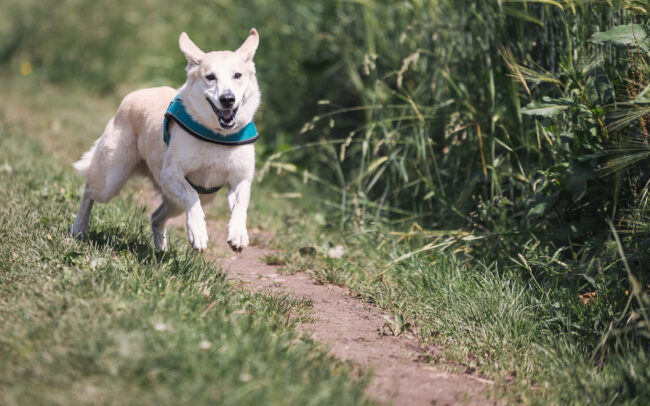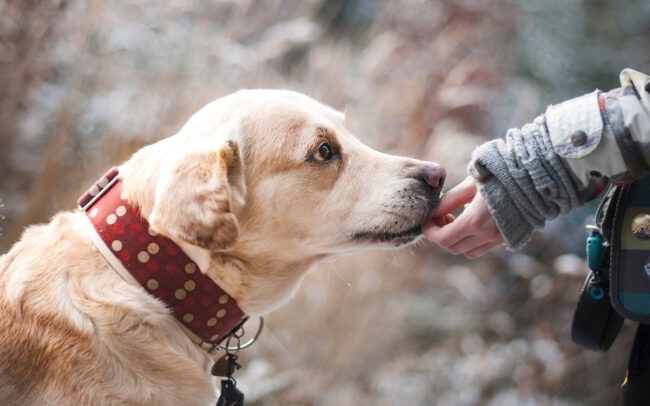Table of Contents
Often, people command their dogs to move or stay from one position to another. For effective communication, release words are used!
Release words are communicative commands that an owner tells the dog to move or stay from a particular position. Release words are necessary to communicate with the dog; otherwise, your pet might not let go of something or may not respond to your call at all. This lack of discipline in a dog is not good.
Best Release Words For Dogs
Many release words are useful in dog training programs. Many pet lovers enrol their pets into a training program wherein the owners and the pets are taught ways of communicating.
Here, the owners are taught release words, commands, and gestures/actions. While some release words are only said, some release words require the pet owner to use hand signals.
While commanding the pet with the release words, you must know that you are requesting the pet dog do something for you. As such, it is mandatory to give the release word command in a clear, calm, and authoritative voice.
The following are some of the best release words for pets.
Good
The pet lover uses this release word to let the pet know he has done the right thing or made the correct choice. You should say this word in a pleasant happy tone and accompany it with caresses and physical affection. When the adorable pup would hear this word, the pup would immediately understand that you are happy.
No
This negative communicative word lets the pet know that the particular action shouldn’t be done. However, you should ensure that you don’t use the ‘No’ term too sternly. It should be communicated so that the pet thinks and understands that the action or the choice is wrong and should be avoided.
Okay
Okay, is the release word to let the pet know that whatever action and choice the pet is making is what you asked to do. Use this word consistently to make the pet understand the difference between commands.
Right Here
It is an informal way of the command “Heel.” When the pet is on a leash, it is essential to see no tension on the leash, and they are free to move. The ‘Right Here’ command signifies that you can walk with your pet without pulling on the leash and get their attention.
If the pet restraints and pulls against the leash, say “No,” followed by “Right Here.” The command is to enable a controlled and coordinated walk with the pet.
Let’s Go
This command is used to communicate to move from a stationary position. It lets the pet understand that you are moving and should also move with you.
Sit
This command is to ensure the pet sits in a sitting position. You can use the hand signal to sit over the pet’s head.
Down
This command communicates the pet to be in a laying down position. You can coordinate the command with a hand signal.
Off
This command is to let the pet know to remove the paws on the ground, you’re your body or off anyone else. Use the pet or your body’s leash to remove the pet from you; avoid using your hands.
Wait
This command communicates to the pet to wait until permission to go through the doorway or in the room. It is a useful command. However, this command doesn’t require the pet to sit or lay down; it is just to wait.
Stay
This is an absolute release word command for your pet. On communicating this release word, the pet should stay in the spot he is assigned or directed to, regardless of whatever is happening around him.
Leave It
This command is for communicating to the pet to leave whatever the pet is clinging to or paying attention to (be it food spills on the floor or bothering another person). It is meant for the pet not to give attention to whatever the mind is on.
Often pets stay away temporarily to go back to the things they are asked not to pay attention to. If you want the pet to stay entirely away from the particular object, use the release word several times.
Quiet
This command is to communicate to the pet to stop barking or making sounds.
Wait on Your Rug
This command communicates the pet to be on the “reserved laying spot” in the house. You should initially show the pet what a rug is and make sure the pet remains undisturbed there.
Release Words For Dog Training – What Should You Know?
Dog training is necessary for effective communication between the pet owner and the pet. It is essential to have proper communication with the dog to achieve dog training success. Always remember that pets learn when they remain calm and focused.
Teach them when they are calm and never induce punishment-based training. While imparting dog training to your pet, always ensure you use three essential tools- cues, markers, and release words for effective communication with your pet.
Also, use the release word or phrase frequently for the dog to understand and develop into it. Consistency is the key to effective communication in dog training.
Release Cue For Dogs – How Do They Work?
Release cues are release words collaborated with physical gestures. A pet understands release cues more than mere verbal communication. It also helps the pet understand, learn, and develop as they co-exist with their owner.
As we know, pets don’t understand language, so it is essential to communicate with pets through release words and physical gestures for better communication.
Release Words For Hunting Dogs
Release words for hunting dogs differ from dealing with prey and hunting for it wild. It is essential to take care while using release words for hunting dogs to avoid repercussions on the owner.
Additionally, hunting dogs must be trained well and thoroughly before putting them out practically on the field. Some famous release words for hunting dogs include Fetch, Sit, Stop, Stay, Come, and Kennel.
Fun Release Words For Dogs
Some of the fun release words for dogs include Good, Okay, Let’s Go, Well Done, Play, and Free Dog.
Release words are the perfect communicative terms used between a pet owner and the pet. Effective communication is only possible when the pet is trained well to understand and learn how the owner communicates and for the owner to use physical gestures and words.


